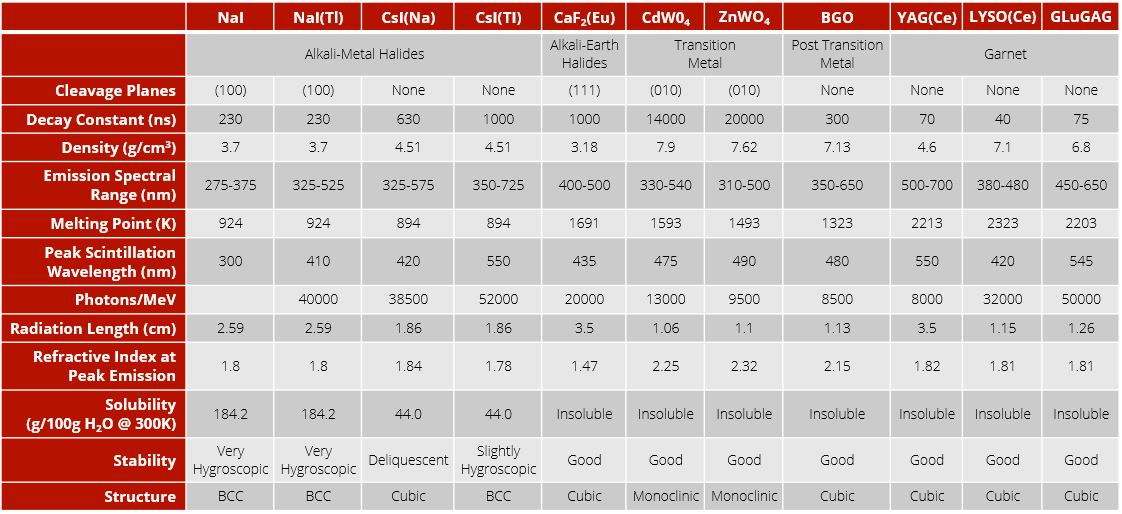Introduction to Scintillation
In 1895, German mechanical engineer and physicist Wilhelm Röntgen painted a screen with barium platinocyanide, an inorganic scintillator. At the time, Röntgen was investigating the existence of a new kind of ray and incidentally discovered that barium platinocyanide luminesced when exposed to them. These new rays became known as X-rays, and barium platinocyanide became the first radiation detector.
Early scintillators used a simple “yes or no” indicator, answering the question “Is radiation present?” Since then, new scintillators have been discovered and developed to provide quantitative information about ionising radiation, including differentiating alpha, beta, gamma and x-ray radiation.
Subatomic particles with enough energy to displace electrons from atoms and molecules – thus ionising them – is what makes up ionising radiation. There are two types of radiation: direct ionising radiation and indirect ionising radiation. Direct ionising radiation are charged particles with mass—alpha particles and beta particles. Indirect ionising radiation, on the other hand, is uncharged particles that do not directly ionise matter.
Alpha Particles are high energy, positively-charged particles. Identical to the nucleus of a helium atom, alpha particles are made up of two protons and two neutrons, which makes them relatively heavy. Despite their high energy, they do not travel far in air nor penetrate solids deeply. They are produced in particle accelerators like cyclotrons and synchrotrons and they are used in smoke detectors, some power sources, static eliminators and some cancer treatments.
Beta Particles are emitted during beta decay of an atomic nucleus. They are high-energy, fast-moving positrons and/or electrons. They are lighter and more penetrating than alpha particles. As beta particles decelerate, they produce secondary gamma radiation. Beta particles are used in medical applications for eye and bone cancer treatment and as tracer particles for positron emission tomography (PET) scans. They are also useful for paper inspection and illumination.
Gamma Rays are electrically neutral photons produced in the nucleus through nuclear reaction, subatomic particle decay or radioactive decay. Through indirect ionization — the photoelectric effect or the Comptom effect — gamma rays eject electrons turning them into beta particles. Gamma rays are used in spectrometry, non-contact sensors, gamma ray detectors, equipment sterilization, cancer treatment and diagnostics.
X-rays are electrically neutral photons produced outside the nucleus. X-rays are used in medical diagnostics, imaging, radiography, computed tomography (CT) scanning, fluoroscopy, and radiotherapy for cancer treatment.
The unique luminescence ability of scintillators was instrumental in developing radiation detection equipment and, ultimately, the field of nuclear physics. Our recent blog article, What are Scintillators? How do they work? offers a primer on the physical mechanisms that cause an inorganic scintillator’s radioluminescence.
When paired with the appropriate photodetectors, inorganic scintillators are an essential component in medical imaging, nuclear physics, oil and gas exploration, dark matter research, space exploration, geophysics, environmental monitoring, non-destructive testing, and homeland security.

